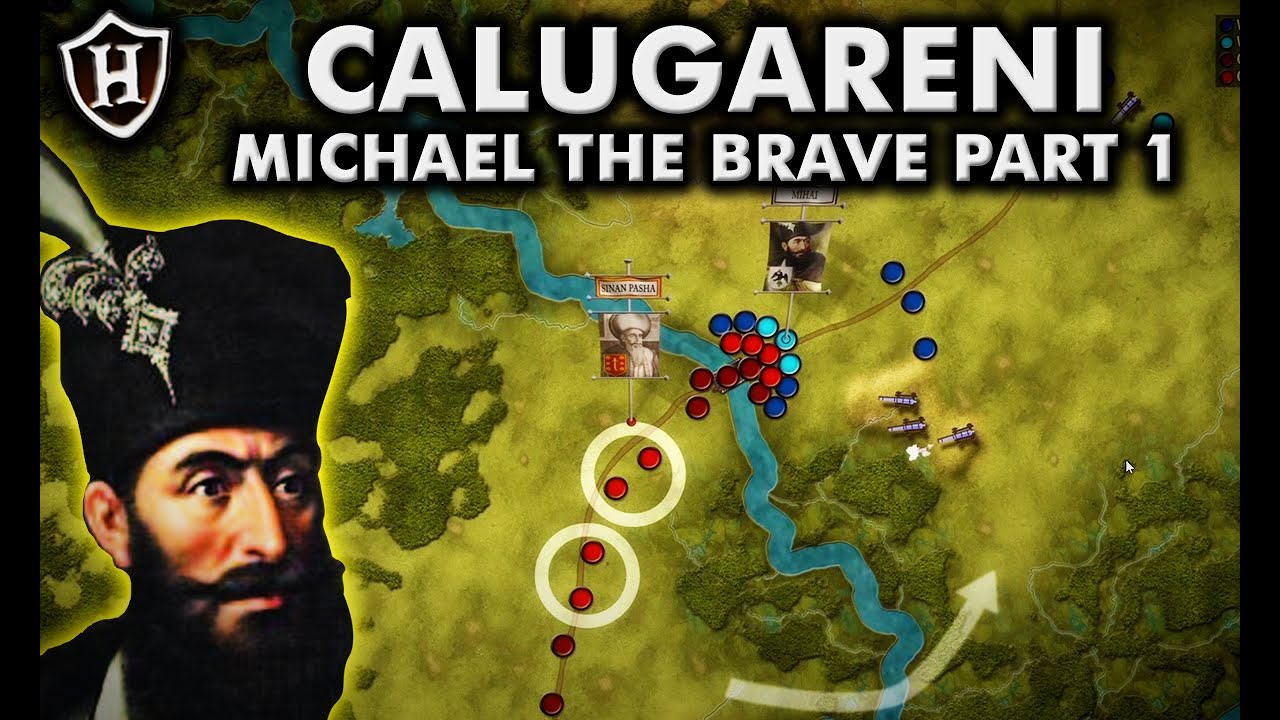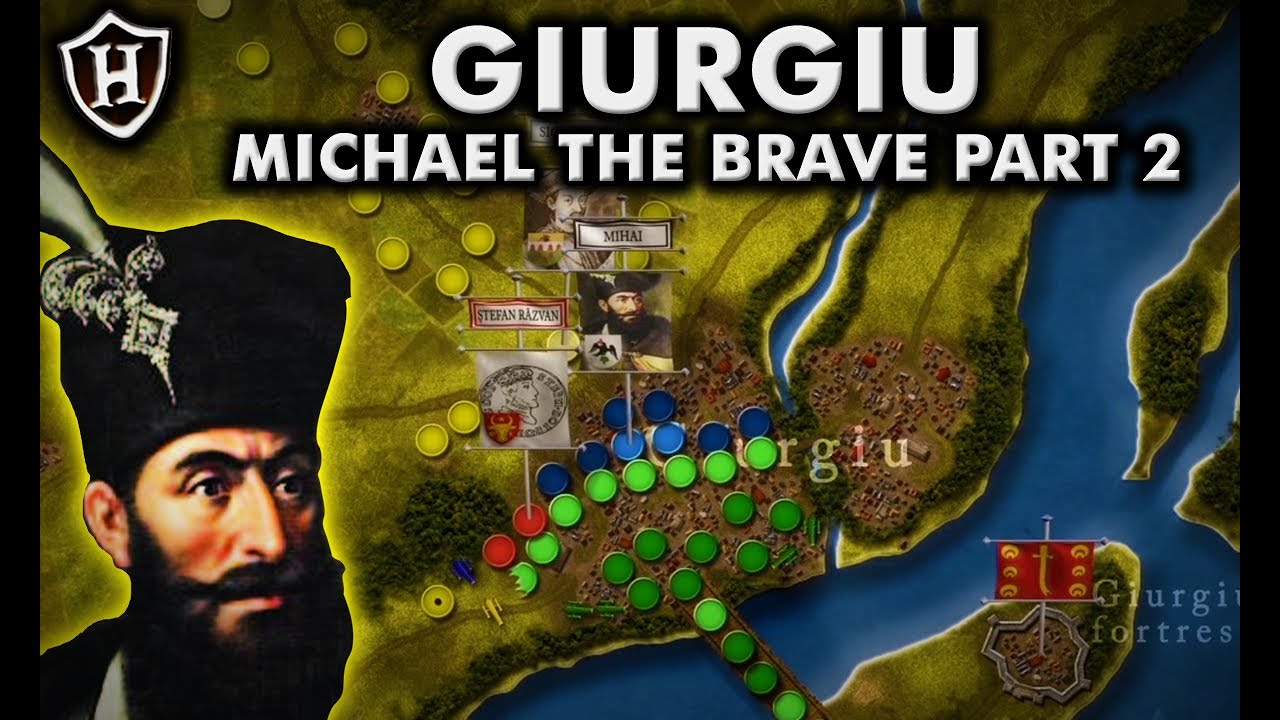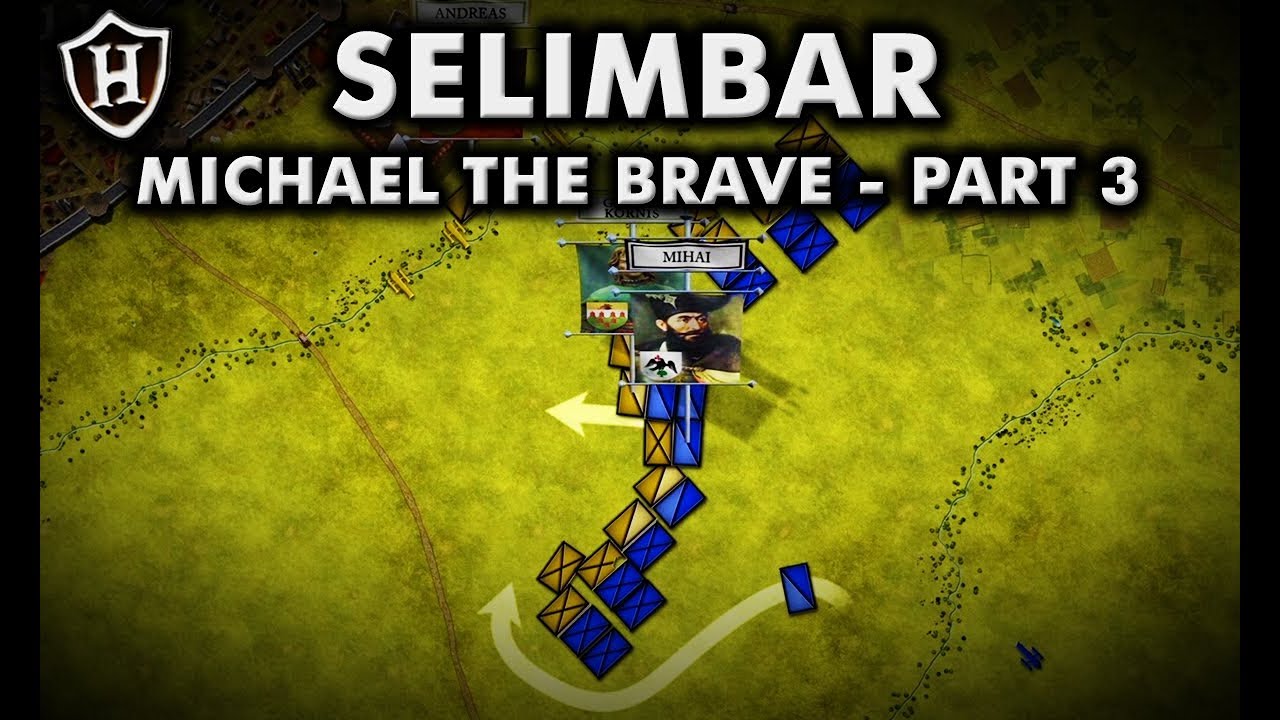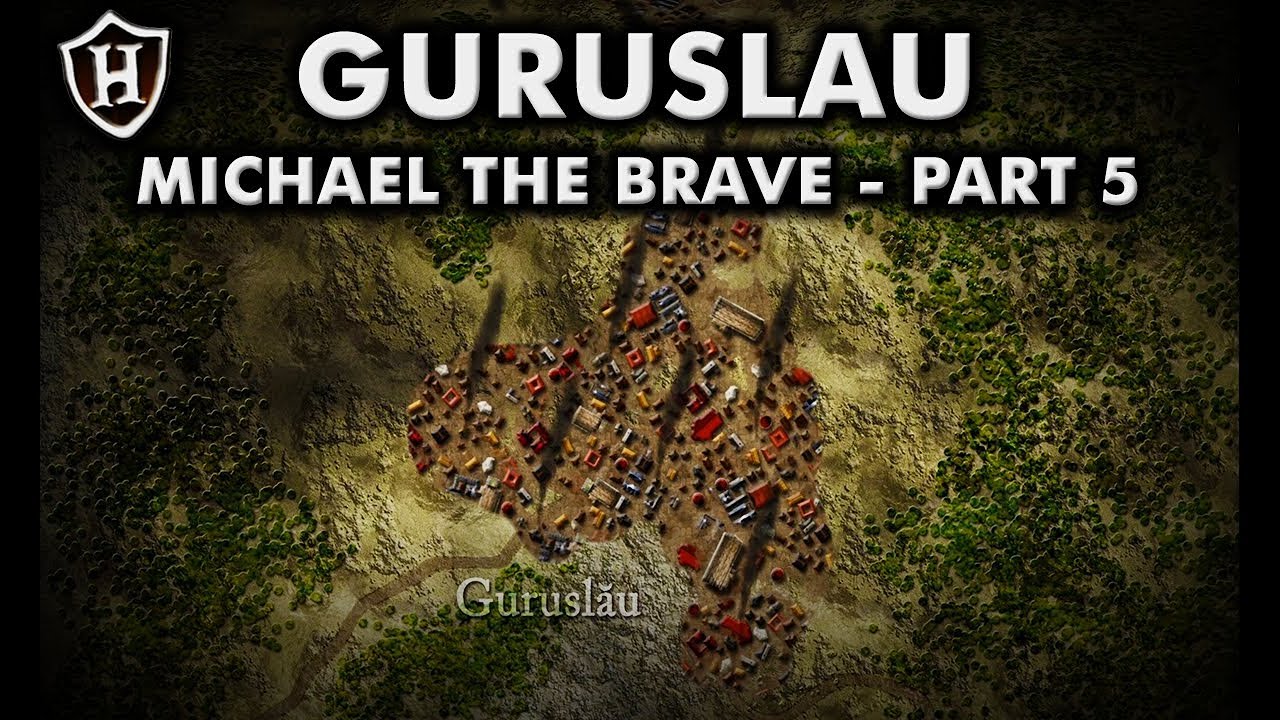In a previous topic I made a suggestion to add the Romanian civilization in Age of Empire 4:
In this topic I’d like to expand on that idea with a campaign suggestion: Michael the Brave
Short History: Michael the Brave briefly united much of the future Romania under his rule. Acceding to the princely throne of Walachia in 1593, Michael submitted in May 1595 to the suzerainty of the prince of Transylvanian lord Sigismund Báthory in order to secure support against Ottoman rule. He routed the Turks at Călugăreni and Giurgiu. In 1598, he took an oath of fealty to the Habsburg Emperor Rudolf II and also concluded a peace with the Turks. The following year he attacked his new Transylvanian suzerain Andreas Báthory and defeated him at Şelimbăr. Having now proclaimed himself prince of Transylvania, Michael next conquered Moldavia and assumed the title of “prince of Ungro-Walachia, Transylvania, and Moldavia.” In September of that year, however, the troops of Emperor Rudolf divested him of Transylvania, while Polish forces wrested Moldavia from his control the following month. Reconciled to the Emperor in 1601, he helped suppress a rebellion of Magyar nobles at Gorăslău but was killed shortly thereafter on the order of the imperial general Giorgio Basta. During the 19th century, Michael acquired the reputation among Romanian nationalists as the pioneer of national unity.
Long in-depth History with video: 1/5 Motivated by the harsh economic conditions imposed by the Ottoman Empire, the 3 princes: Sigismund Bathory of Transylvania, Aaron the Tyrant of Moldavia and Michael the Brave of Wallachia join the Holy League and promise each other to revolt on the same day, November 13th 1594. Michael the Brave replaces high ranking officials with loyal supporters, mainly from his power base in Oltenia, after nearly 70 years of Princes and boyars who were compliant towards the Ottomans, Michael the Brave’s Wallachia will fight for independence. The Holy League promises to support the Wallachian revolt, knowing that it could open a second front against the Ottomans. (prelude to war)
Pretending he wishes to settle financial debts, he invites Turkish creditors and in an act of clear provocation, massacres them together with their large escort of soldiers. With around 8,000 troops at his disposal, Mihai then personally leads a swift attack on the key Danube crossing at Giurgiu. He successfully besieges important Ottoman fortifications and raids numerous towns villages in the Lower Danube area, leaving utter destruction in his wake, before returning back across Danube. (1st victory)
Destruction of important border fortifications in quick succession causes great concern in Constantinople. The Sultan dispatches an army from the south under Mustafa Pasha, and redirects a
Tatar contingent from the Hungarian front to enter Wallachia from the west.
The Tatars advance quickly towards the reported position of the Wallachian army. Little do they know that Mihai received word of their movement. He secretly sends a small force west to set up an ambush, while maintaining an appearance that his entire army is encamped just north of Giurgiu. Expecting to encounter Mihai further east, the Tatars fall straight into a trap while marching in a loose formation, losing nearly half of their troops. Mihai subsequently intercepts them and wipes out their army, preventing them from up with Ottoman forces approaching from the south. (2nd victory)
Meanwhile, Mustafa Pasha crosses the Danube to confront the Wallachian prince. Aware of the enemy’s numerical superiority, Mihai reacts quickly. Just four days after defeating the Tatars he leads a daring night attack into the Ottoman camp and routs Musfata’s army, forcing them into a disorganised retreat. He defeats the Ottomans in a pitched battle, killing general Mustafa. Mihai then embarks on a campaign of pillage and destruction. (3rd victory)
Another Ottoman general, Hasan Pasha, takes over Mustafa’s retreating army and attaches it to his own contingent. Mihai gives battle and completely destroys Hasan’s army, killing the Ottoman general, along with the Crimean Khan’s son that was accompanying him. Mihai then retreats back to Wallachia with a vast plunder. (4th victory)
Mihai comes to the aid of Aaron the Tyrant in attacking Braila, Kylia and other Ottoman positions. With the Lower Danube area and the Danube delta secured, supply lines to the Ottoman army in Hungary are virtually cut, which significantly slows their otherwise successful campaign against the Holy League. (he mostly played support here)
Mihai’s renews his attack, devastating parts of northern Bulgaria, pushing deep into Ottoman territory. At one point he reaches within one day’s march from Constantinople itself, before turning back after assistance from the Holy League fails to materialize. Many in the Ottoman capital begin refering to Mihai as “king” and even “emperor”, spreading rumors that he might take the capital at any moment. Mihai’s fame spreads across the continent. Many warriors, sell-swords and mercenary companies flock to join him. Ottoman scholar Selanik Mustafa writes of the great destruction: “All of our sanjaks are captured. We are ruined.” The urgency of the situation is such that Sinan Pasha himself, the great mastermind behind the successful campaign against the Austrians, is recalled from Hungary to organise a counter-attack on Wallachia.
But Mihai has reasons to worry. While his campaign was certainly successful, having personally led his troops in battle he saw first hand that the Wallachian army is obsolete and in a deplorable state. There is a general shortage of horses, weapons, carriages, tents, and even food supplies, water and fodder. With his numbers bolstered to around 15,000 Mihai takes up position the Danube. Across the river the Ottomans are amassing 100,000 combat and non-combat troops, intent on fully incorporating Valahia into the empire.
Mihai stops his army and makes a stand near Calugareni. The battle lasted for about 16 hours. Wallachian losses are fairly light. Of the 15,000 troops under his command, Mihai lost about 1,000 men, most of whom fell in the final charge. Meanwhile, Sinan wasn’t able to bring his full force to bear, and of the 30 - 40,000 troops that participated in the battle, between 10 and 15,000 perished. 4 pashas and 7 sanjak begs fell in battle. Much of the artillery and treasure from the camp were lost to the enemy. (5th victory)
2/5 Despite his stunning victory at Calugareni, the outnumbered Mihai retreats north, unable to stop Sinan Pasha’s advance. Unaffected by the tactical defeat at Calugareni, the Ottomans are able to replace their losses and start incorporating Wallachia into the empire. The two capitals Targoviste and Bucharest fall just three days after the battle. Wallachia, which had produced so much resistance under Mihai the Brave, looks destined to become an Ottoman province. (retreat, sort of defeat)
Having retreated to the Bran Pass, Mihai knows that he needs a second victory to inflict enough losses on the Ottomans if he is to discourage further attacks on Wallachia and maybe seek a political compromise. But in the weeks following the battle of Calugareni many Wallachian peasants leave his army to defend their homes from akinji attacks. As a result of all these factors, Mihai’s army is down to 8,000 men.
But by October, the Transylvanian voivode finally arrives with his army. Help also comes from Moldavia. Stefan Răzvan - a highly competent military leader and voivode, who is very popular among his men – arrives with his contingent. The 3 voivodes waste no time. Their combined army numbers around 32,000 men and 100 cannons. At this time Sinan has up to 40,000 combat troops at his disposal, while the rest are dispersed across Wallachia. Armies of the three voivodes advance on Targoviste. The Ottoman garrison retreats to Bucharest. (6th victory)
Upon learning of the approaching army Sinan decides to retreat south across the Danube and regroup. Not wanting to leave anything for the advancing enemy, the Ottomans sack and burn Bucharest, and blow up the wooden fortifications. In order to catch the fleeing Ottomans, the 3 Romanian voivodes pass by Bucharest, sending only a small Moldavian contingent to enter the city, and continue marching on the road to Calugareni and Giurgiu.
While the Ottomans are crossing the pontoon bridge over the Danube, the 3 Romanian voivodes appear to the north of Giurgiu. Even before the rest of the column has arrived the quick thinking Mihai is the first to attack. He doesn’t want to give the enemy any time to fully form their battle line. After hours of fighting the Ottomans lost about 3000 men, while another several thousand were wounded. The battle of Giurgiu marked the end of the Ottoman ambition to transform Wallachia into an Ottoman province. (7th victory)
After the battle Sinan began planning a general invasion of Wallachia, to massacre and displace the population as punishment for their resistance. But Sinan never got the chance to execute
his plans. His retreat from Wallachia was regarded as shameful. The man who had masterminded so many victories in Hungary against the Holy League was stripped of his position as Grand Vizier.
Across the Danube, Sigismund fulfilled his duty of providing support to Mihai and retreated to Transylvania and Razvan returned to Moldavia. But during his absence, Polish noblemen brought the pro-Ottoman pretender Ieremia Movila to the Moldavian throne. Razvan fought to regain the throne, but was defeated. With Ieremia recognized by the Sultan, Mihai became threatened by a potential Moldavian military intervention.
In order to start rebuilding the economy, the fortress of Braila was attacked and conquered. (minor victory, not counted). Ottomans responded by sending Tatar raiders into Wallachia to attack Targoviste. Mihai intercepted and destroyed their army. (8th victory)
Meanwhile, another operation was launched in the west to take the fortress of Vidin, while Mihai marched south to conquer the fortress of Nikopolis. And although Mihai’s reputation was high because of his spectacular victories against the Ottomans, these measures diminished his popularity among his people. And in addition to heavily taxing his people, the voivode sent a delegation to Rudolf II, The emperor agreed, seeing this as an opportunity to take away some of the pressure from Austria, and shift the fighting into Wallachia and northern Bulgaria.
Mihai made another proposition to Rudolf II: the unification of Transylvania and Valahia. Rudolf refused and began planning to seize Transylvania for himself. Surrounded on all sides, Mihai was forced to seek peace with the Ottomans. He took advantage of his successes on the battlefield and the mass destruction he caused in Bulgaria to gain favourable terms. He kept the fortresses on the Danube and was recognized by the Sultan as the ruler of Wallachia. The Wallachian voivode was now free to deal with his Christian enemies, in order to secure his country.
3/5 Battle of Selimbar & The Unification
4/5 Battle of Miraslau & Dominion Struggles
5/5 Battle of Guruslau & Mihai’s Final Victory
Summary: When you seized the thrones and lands too fast that all 3 major powers formed a coalition… all the while you have wooden walls in the other 2 realms.





